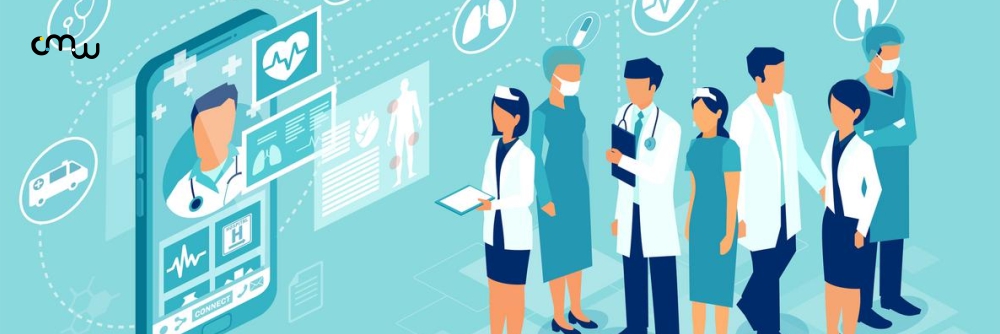Healthcare marketing is a subset of marketing that focuses on promoting the health and well-being of the public.
Healthcare marketing is a subset of marketing that focuses on promoting the health and well-being of the public. It's important for healthcare marketers to understand how public health can be improved through their agency's work, as well as what role they play in making this happen.
Healthcare marketing is similar to other forms of commercial advertising because it uses paid media channels such as print ads and television commercials in order to reach out directly to potential customers with messages about products or services being offered by companies within their industry sector (e.g., pharmaceuticals). However, unlike traditional forms of advertising, which focus solely on selling products or services through persuasive messaging strategies like branding campaigns.
Healthcare marketers must work with doctors, nurses, and other healthcare professionals in order to deliver their message effectively.
Healthcare marketers must work with doctors, nurses, and other healthcare professionals in order to deliver their message effectively. Good communication is essential for any marketing campaign. If the medical team does not know about a particular program or initiative, it cannot be used as part of patient care.
Marketing should be integrated with other healthcare activities so that all staff members understand how the marketing strategy fits into the larger picture of delivering quality care to patients who need it most.
Healthcare marketers should never forget that they are not in charge of providing patient care; doctors and nurses are responsible for this task at hand! Marketing can be viewed as an extension of existing services offered by hospitals or clinics--it's not meant as a substitute for good patient care.
Healthcare marketing campaigns can be used to raise awareness about public health issues, but they can also help sell products.
A healthcare marketing campaign can be used to raise awareness about public health issues, but it can also help sell products.
It's important to note that healthcare marketing campaigns are not necessarily always immoral or unethical. The goal of these campaigns is simply to increase sales by getting people interested in purchasing a particular product. If the product itself is something that will help improve the lives of others, then this may be an acceptable use of advertising dollars; however, if there are any inaccuracies or falsehoods being presented as fact within such an advertisement (such as "product X will cure disease Y"), then this would certainly be considered unethical behavior on behalf of whoever created it!
The media plays a vital role in healthcare marketing.
The media plays an essential role in healthcare marketing. Media can be used to educate consumers, promote products and services and raise awareness of public health issues. It can also help change consumer behavior by providing information that encourages people to seek medical treatment or adopt healthy habits when they are ill.
Media can be used to educate consumers, promote products and services and raise awareness of public health issues. It can also help change consumer behavior by providing information that encourages people to seek medical treatment or adopt healthy habits when they are ill.
There are many different types of media that can be used to reach consumers with your message. Some examples include:
- Print media, such as newspapers and magazines
- Radio (including talk shows)
- Television (including local and cable networks)
- Online advertising, including banner ads on websites
- Social media such as Facebook, Twitter, and LinkedIn
Consumers are now more aware of their healthcare choices than ever before due in part to effective advertising campaigns.
The healthcare industry is one of the most heavily regulated industries in the world. As such, it has traditionally been slow to adopt new marketing techniques and technologies due to concerns about how such practices could affect public health. However, this is beginning to change as consumers are now more aware of their healthcare choices than ever before due to effective advertising campaigns.
Healthcare marketers can use advertising and marketing techniques to protect consumers from misinformation about medical products or services; raise awareness about public health issues; sell products by promoting them as healthy; and influence people's behavior by encouraging them not only what but also when they should seek treatment for specific symptoms (e.g., take an aspirin when you have a headache).
Advertising and marketing can be used to protect consumers from misinformation about medical products or services.
Advertising and marketing can be used to protect consumers from misinformation about medical products or services. Informing the public about new products, educating them about the risks associated with certain products, and warning them of the dangers of specific products are all ways that marketing can help consumers make better decisions about their health.
Marketing can also help consumers make better decisions about the products they buy. Many companies use marketing to inform consumers about new products, educate them about the risks associated with certain products and warn them of the dangers of using specific products.
This type of marketing can help consumers make better decisions about their health. For example, if a company releases a new drug, it will use marketing to inform the public about it and educate them about how it works and how to use it properly.
The healthcare industry has evolved from one that focuses primarily on treating patients to one that focuses on preventing illness and promoting wellness.
The healthcare industry has evolved from one that focuses primarily on treating patients to one that focuses on preventing illness and promoting wellness. Healthcare marketing has changed as well, with more emphasis placed on preventative care and wellness.
In order to provide the best possible service for their patients, doctors must be able to provide them with information about how they can live healthier lives. This means that healthcare marketing campaigns need to focus not only on treating disease but also preventing it in the first place.
This is why healthcare marketing campaigns have become more focused on preventative care and wellness. In order to provide the best possible service for their patients, doctors must be able to provide them with information about how they can live healthier lives.
This means that healthcare marketing campaigns need to focus not only on treating disease but also preventing it in the first place. This is why healthcare marketing campaigns have become more focused on preventative care and wellness. In order to provide the best possible service for their patients, doctors must be able to provide them with information about how they can live healthier lives.
In conclusion, it's clear that healthcare marketing has the power to promote public health by encouraging people to adopt healthier lifestyles. Healthcare marketers can use their expertise and knowledge to create campaigns that will encourage patients and consumers alike to make healthier choices. At Compendious Med Works, we know how to create compelling healthcare marketing campaigns that will get you results. Contact us today to learn more about how we can help you with your healthcare marketing efforts. The more we know about the role of healthcare marketing in promoting public health, the better equipped we'll be to make informed decisions about our own healthcare needs!





